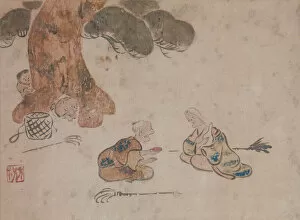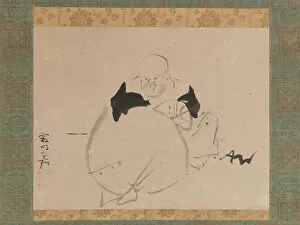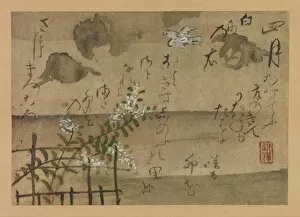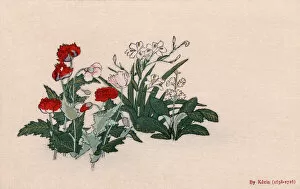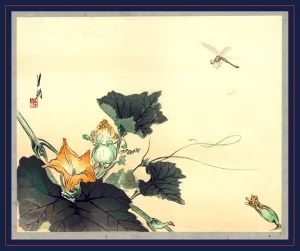Ogata Collection
"Ogata: A Journey Through Japanese Art and Nature" Immerse yourself in the captivating world of Ogata, a name synonymous with artistic brilliance in Japan
All Professionally Made to Order for Quick Shipping
"Ogata: A Journey Through Japanese Art and Nature" Immerse yourself in the captivating world of Ogata, a name synonymous with artistic brilliance in Japan. From the graceful Japanese Red Crown Crane to the delicate Camellia by Water, dated 1741, Ogata's creations transport us to a realm where nature and art intertwine seamlessly. The enigmatic Old Man and Woman, created by unknown artists under Ogata Korin's influence, captures the essence of wisdom and serenity. Meanwhile, Bellflowers in Basket from the 18th century showcases Ogata Kenzan's mastery of pottery as he breathes life into clay. Autumn Ivy, crafted after 1732 by Ogata Kenzan himself, evokes a sense of tranquility through its intricate brushstrokes. Hotei, another masterpiece attributed to Ogata Korin after 1704, brings forth joy and contentment with its portrayal of an iconic deity. Drawing inspiration from Fujiwara no Teika's Birds and Flowers series are Sixth Month and Fourth Month compositions that showcase both beauty and poetry. These works exemplify how art can transcend time while preserving cultural heritage. Poems by renowned poets such as Fujiwara no Ietaka (1158-1237) and Ki no Tsurayuki (ca. 872-945) adorn decorated paper alongside motifs like Bush Clover—a testament to the symbiotic relationship between literature and visual arts during this period. Intricate flower arrangements curated by none other than Ogata Korin himself demonstrate his unparalleled skill in capturing nature's ephemeral beauty. Additionally, Blossom Tree with bamboo supports stands tall as a symbol of resilience amidst adversity—an emblematic representation often found within his works. Step into the enchanting world of Ogata—where every stroke tells a story; where each creation is imbued with profound meaning; where art becomes an expression of reverence for nature itself.

